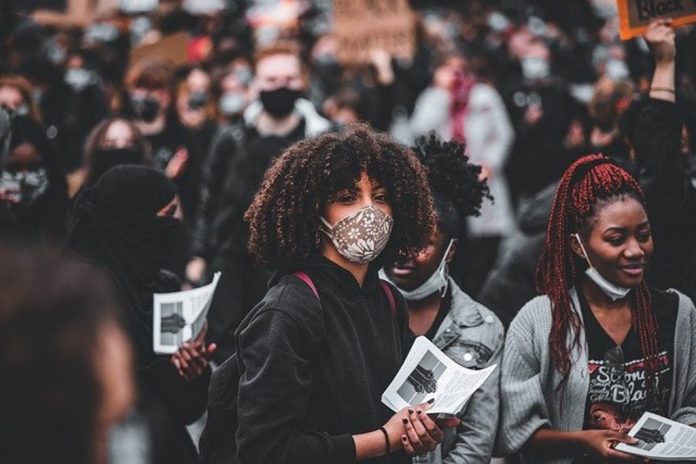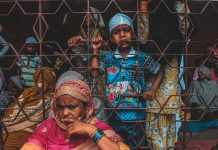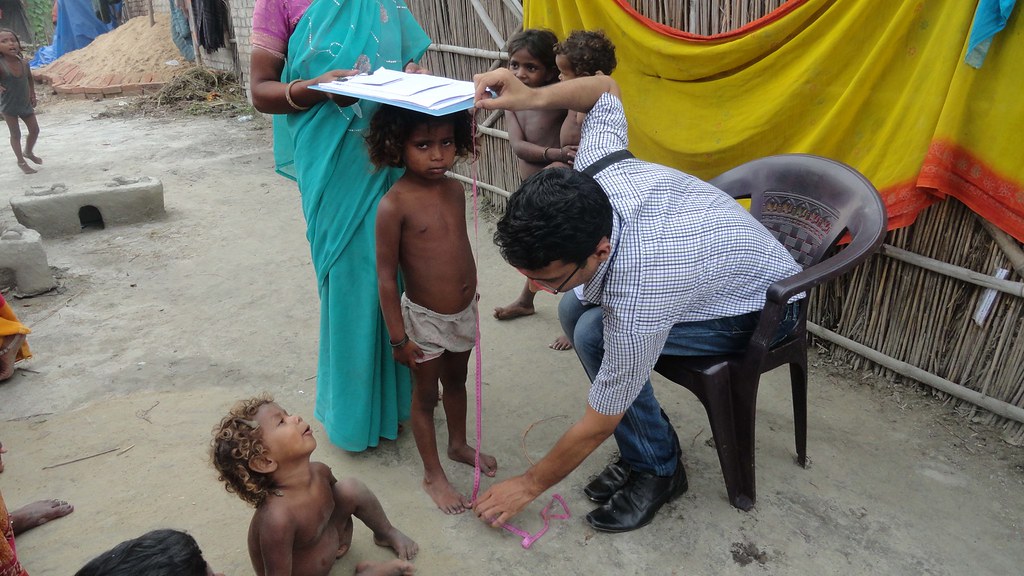
The human civilization, as we know it, is facing its worst crisis. One that has bought the global village to a standstill, baffled world leaders, claimed thousands of lives and endangered millions more. Not many years ago, in 1967, United States Surgeon General, Dr. William H. Stewart allegedly made a famous (or rather infamous) remark “It is time to close the book on infectious diseases, and declare the war against pestilence won.”
Yet, here we stand, at the peak of a global crisis, brought about, neither by war, nor by economic calamities (like the great depression) rather by a viral strain which took the world by storm at the opening of 2020. Today, more than a year after the first case of COVID-19 emerged in a small, crowded industrial town of China; the pandemic continues its exploits around the globe.
India fell prey to COVID-19 in January 2020 and has since been battling the situation at hand; some would say, with the best capacity that it could. As of today, the COVID tally lies at 6.07 million cases in India. Within India, Maharashtra is leading the tally with 780,689 positive cases, flowed by Andra Pradesh (424,767), Tamil Nadu (422,085), Karnataka (335,928) and Uttar Pradesh (225,632). Incidentally four of these five states happen to be among the top five industrialised states in India: Tamil Nadu, Maharashtra, Gujarat, Uttar Pradesh and Andra Pradesh.
There seems to be an evident association between level of industrialisation and spread of the disease. One which is backed historically and sociologically. The level of industrialisation of the states severely infected by COVID is a significant factor in understanding the scale and nature of viral spread in specific regions of India. Hence, let us take stock of salient features of ‘industrialisation’ in general and what it means in context of India specifically. Industrialisation refers to a sustained economic growth following the application of inanimate sources of power to mechanise production, later spreading to agriculture and services. It is a social change which is accompanied by processes like urbanisation, geographical concentration of industry and population and changes in occupational structures. The euro-centric, abstract ideal of an industrialised society revolves around scientific evolutionism, guided by hyper-modernist tendencies. For instance, Max Weber’s interpretation of an industrialised, modernised western world as being progressive, rational, bureaucratised and disenchanted of traditional, magical and supernatural systems of beliefs and values, is a classic ideal typical description. However, many erstwhile colonies of Imperial colonial powers like Britain, France etc, witnessed the unravelling of industrialisation in a haphazard and supposedly distorted pattern, which differed severely from ideal typical, abstract descriptions of the same. In India for instance, we must be aware of two details: One, the forced industrialisation brought about by an alien imperialist forces uprooted multitude of rural households, transiting them to the vortex of urbanisation. Many social problems which were unique to city life began festering. These were caused by inappropriate living situations, and space crunch, thereby giving rise to slum settlements (chalws of Mumbai, Jhuggi Jhopri of Delhi, bustee in Kolkata, Cheries of South Indian towns ). While this has been a historical trend in industrial towns like Mumbai, Nagpur, Kanpur, Madurai, Ahmedabad, Kolkata, Tuticorin, Cochin etc, one cannot take for granted the fact that very little has changed today. According to the census 2011, Mumbai, the financial capital of India, has the biggest share if slums; with 42% of its population residing in slums. The slum population in the states of Maharashtra, Andra Pradesh, Tamil Nadu are 10.54%, 12.04% and 8.04% respectively. This statistic can well give one an idea of social and health problems that ensue as a result of inadequate housing, water and sanitation facilities (aspects typical to slum dwelling). Social problems caused by slums- overcrowding, bad sanitation, lack of education are too many.
Two, a number of pre-capitalist relations of production co-exist with capitalist relations. For instance, the traditional caste system in India forged an unholy alliance with the process of industrialisation which resulted not in the extinction of feudalism, rather a fusion of capitalist mode of production with feudal and traditional values. While many downtrodden ‘low castes’ escaped traditional occupations to enrol themselves in ‘modern’, ‘industrial’ and ‘secular’ job profiles, but did not grant them freedom from exploitation as one would envision. The ‘new age exploitation’ of the working class (specifically those who engage in menial labour) was driven by relentless profit motive of the capitalist owner, a production process characterised by commodity fetishism and the traditional, archaic caste-gender paradigm.
Hence, it would be safe to say that for reasons which were local (and unique) to the Indian social-cultural-economic fabric, industrialisation and modernisation defaulted on their promise of emancipation, liberation of the masses. What did prove to be accurate were Marx’s theories of alienation of labour and Weber’s theory of Iron Cage, where the worker was now reduced to a non-thinking, non-feeling, and constrained cog in the massive profit minting machine, which had the undivided support of traditional and feudal structures of authority. As the pandemic pushes more of this world to the brink, it is essential that we critique the structures that have proved to be unsustainable, discriminatory, historically bias, for, this pandemic has only exposed what has been hiding under the garb of growth, evolution and advancement.
Another structure which is worth mentioning is the State. The role of the Indian state in the context of industrialisation makes for an interesting study. The Indian state has been described by many as a neo-liberal state. Neo-liberalism is a late 20th century revival of ‘liberal’ market principles practiced in the 19th century, associated with free-market capitalism, liberal economy and minimum government interference. In india however, like industrialisation, neo-liberalism set its own course. It has been practised like a double edged sword. On the one hand by deploying the language of liberty and choice, giving individuals the opportunity to aspire, mobility by connecting them to the modern and free market, neo-liberalism tends to ‘liberate’. On the other hand one does not observe a complete withdrawal of state so as to encourage a laissez faire like environment. The state has rather maintained a position of convenience. It has not weakened and withdrawn into the shadows. It rather lurks behind them, always watching, like the ‘Big Brother’. The state has never been as powerful as it is today with techniques like bio-surveillance, subtle (even overt in recent times) use of legitimised violence, novel methods of punishment etc to gain greater and effective control over its citizens. As a result of this ambiguous approach to neo-liberalism, one observes a convenient and ever increasing absence of state from domains like health, education, transportation and communication, social security, hygiene and sanitation, the domains which would’ve equipped the common citizen in their battle against the looming crisis. On the other hand, however, one witness the state’s imposing presence in the form of initiatives like ‘One nation, one market’, Jan Dhan yojna, demonetisation, half-hearted efforts at privatisation etc. Staying true to their stand, the State lurked behind shadows of inactivity letting crony capitalism, unsystematic industrialisation and social-cultural handicaps mark out its victims, and wait patiently, till a calamity, much like COVID-19 began preying the ‘vulnerable’ (rather those who were pushed into becoming ‘vulnerable’ over years). The sudden spurt in positive cases over select regions in India, the appalling number of deaths, the in equipped public healthcare system and the subsequent collapse of the system of social security, education and civic liberties were not mere coincidences. These were ticking time bombs waiting to be set off; conspiracy hatched by the unholy alliance of crony capitalism and the neo-liberal state. In the coming times, the state is likely to have an important role to play with regards to the process of development and distribution of a vaccine for COVID-19. This particularly is true for the Indian state, responsible for the multitudes that have no choice but to invest their faith in the subsidised public health sector. Whether or not the state chooses to seek redemption by taking the lead in the production, procurement and distribution of the envisioned COVID-19 vaccine would be a supremely important factor with respect to the vision of our post-COVID world.
An objective overview of social facts shows us why the crisis situation was bound to unfold differently across the nation and observe patterns, if any. One such pattern observed was that of complicity between high levels of industrialisation and an equally high number of positive COVID-19 cases. Though, this article does not claim that rampant industrialisation along with the neo-liberal state must be solely held responsible for the manner in which the pandemic unfolded, it does, however, strongly recommend critiquing the intersection of the two structural institutions. This would help us locate the historicity of disasters as, not mere coincident but rather as a spectre which was in the offing for quite a while; one that is likely to repeat itself over and over owing to the unsustainable character of the alliance between the State and the market.
Bhavya Kumar is a Doctoral Research Scholar at CSSE, TISS Mumbai.













